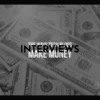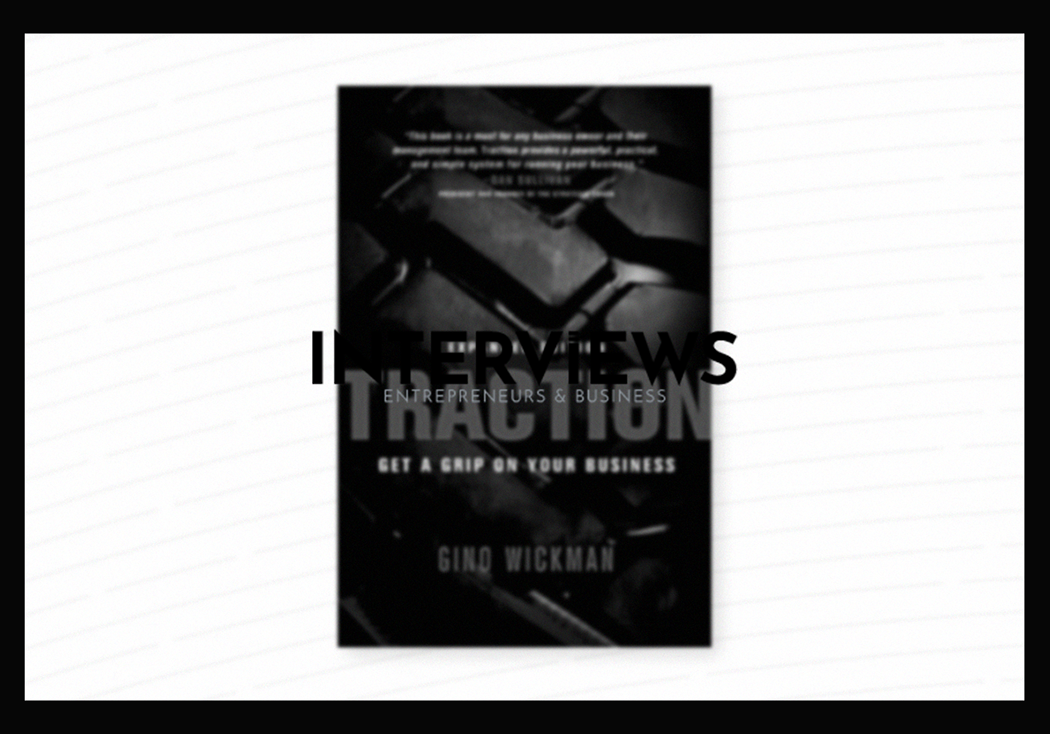Is Your Business Stuck in Neutral? Let’s Talk Traction (and No, Not the Orthopedic Kind)
Does your business feel like it’s not moving? You work hard, maybe too hard. Yet, progress seems distant. It’s exhausting, like driving in mud. The missing piece is Traction.
Forget hospitals and pulleys. In business, “traction” means measurable progress and momentum. Think of traction as the wind in your sails or fuel for your rocket. It’s where your idea becomes a thriving reality. There’s a book called
The Traction Book: Your No-Nonsense Guide to Business Momentum
Michael Gerber wrote the E-Myth. Gino Wickman gives us
The book unveils secrets for strengthening six key components of your business. It aims to boost focus, growth, and enjoyment. Running a business should not feel painful.
Enter EOS: The Entrepreneurial Operating System – Your Business GPS
The book is your starting point. What is the bigger picture? That’s where EOS, the Entrepreneurial Operating System, comes in. EOS acts as your business operating system—not a computer program. Gino Wickman developed EOS to help businesses:
- Streamline Operations: Reduce chaos and run smoothly.
- Improve Team Alignment: Ensure everyone rows together.
- Achieve Goals: Hit targets effectively.
EOS focuses on three areas: Vision, Traction, and Health. This is the holy trinity of business success. The EOS Model visualizes your business with six components that require management:
- Vision: Know where you are headed.
- People: Ensure the right team is in place.
- Data: Monitor the numbers closely.
- Issues: Solve problems instead of ignoring them.
- Process: Maintain consistency in operations.
- Traction: Measure actual progress.
EOS offers essential tools to address these areas:
- Vision/Traction Organizer (V/TO): Combines vision and traction in one document.
- Accountability Chart: Defines roles and responsibilities clearly.
- Rocks: Focus on quarterly priorities that matter.
- Meeting Pulse (Level 10 Meetings): Weekly meetings to enhance productivity.
- Scorecard: Tracks metrics for performance assessment.
Using EOS boosts alignment, accountability, and execution. You achieve more with less drama.
The Six Pillars of Business Traction (According to EOS)
Let’s explore the six key components of Traction within EOS:
- Vision: Clarity on direction is crucial. A clear vision guides all decisions.
- People: “Right people, right seats” is vital. Teams must fit their roles.
- Data: Data-driven decisions outperform guesswork. Track metrics effectively.
- Issues: Problems must be confronted openly. EOS helps in addressing them.
- Process: Streamlined processes maintain quality and efficiency.
- Traction: This ties everything together. Accountability drives real results.
Thinking of Hiring an EOS Implementer? Let’s Talk Dough.
Implementing EOS feels like learning a new language. EOS Implementers guide businesses through the process. They lead you toward success.
The big question: how much do they cost? Expect to pay between $20,000 and $45,000 per year. Prices vary based on experience and certification. Here’s a session fee breakdown:
- Professional EOS Implementers: About $4,536 per session.
- Certified EOS Implementers: Approximately $5,284 per session.
- Expert EOS Implementers: Roughly $6,593 per session.
Implementers charge by session day. There are no long-term contracts! Pay only for useful sessions. Usually, engagements start with monthly sessions, moving to quarterly one-day meetings later.
Selecting the right implementer is essential. Avoid cheap options that don’t fit your needs. Interview candidates to find a match for your business. It’s like finding the right partner for strategy.
Can you DIY EOS? Yes, but having a guide helps immensely at first. It keeps you accountable and on track. Building a structure alone can be tough.
If you’re budget-minded, consider EOS One. It offers cost-effective EOS implementation. Pricing is fair: first user is free; subsequent users cost $10 monthly each.
Traction in Plain English: Beyond the EOS Jargon
measurable progress and momentum. It shows that your business is moving forward, not stagnant.
You need evidence that customers use your service or product and pay for it. It’s proof that your idea has merit. You need validation.
How can you tell if you have traction? Watch for these signs:
- Customer/User Acquisition: Are new customers increasing over time?
- Revenue Generation: Is your income growing?
- User Engagement: Are customers actively using your offering?
- Market Demand: Are people seeking your product?
- Positive Customer Feedback
- : Are customers happy? Do they leave good reviews? Or are they grumbling online? Negative feedback is the opposite of traction.
- Investor Interest: Are investors contacting you? Traction makes your business appealing to them.
- Partnerships: Are companies eager to collaborate? Partnerships suggest traction.
Why is traction so crucial? Here are key reasons:
- Attracting Investors: Investors want proof of potential. They do not fund dreams. Traction acts as that proof. It’s like showing a lottery win (hopefully).
- Demonstrating Viability: Traction proves your idea is more than wishful thinking. It’s tangible, effective, and validated.
- Driving Growth: Traction fuels your growth. A business with momentum has a better chance for steady expansion. It’s a cycle: traction leads to more traction.
Meet Gino Wickman: The Traction Guru
Gino Wickman created EOS and the
Your EOS Reading List: Beyond Traction
Interested in EOS? Great. Here’s where to go next. The experts recommend:
- Start with
Traction . This is the core text. - Then, read
Get a Grip . - Finally, get into
Rocket Fuel .
Employees in EOS companies can read
Level 10 Meetings: Your Weekly Dose of Productivity
Remember the “Meeting Pulse” tools in EOS? This is the Level 10 Meeting. It is a structured, 90-minute weekly session aimed at high productivity and accountability. Think of this as a weekly business check-up.
Level 10 Meetings focus on:
- Increased Productivity: Focus on key issues and goals to accomplish more.
- Improved Alignment: Ensure everyone shares the same objectives. No more silos.
- Enhanced Accountability: Hold individuals accountable for their tasks. No excuses allowed.
A special element of Level 10 Meetings is the Identify, Discuss, Solve (IDS) process. It targets finding the root causes of issues and brainstorming real solutions. Each meeting results in a To-Do List with action items and follow-up. Things actually get done.
Traction vs. Friction, Rockefeller, and Agile: Business Buzzword Breakdown
Business terms can be unclear. Let’s see how “Traction” (in EOS) compares with other concepts:
- Traction vs. Friction: In physics, friction resists movement. In business, we seek traction, not friction! Physical traction grips like tires on the road; business traction means gaining momentum.
- EOS Traction vs. Rockefeller Habits: Both seek business growth, yet differ. EOS emphasizes vision, team alignment, and accountability. Rockefeller Habits focuses on sustainable growth and culture. EOS is the operating system while Rockefeller Habits are strategic habits.
- EOS vs. Agile: Agile focuses on product development with flexibility. EOS covers overall business execution. Agile builds products; EOS builds businesses.
Traction of a Different Kind: Orthopedic Edition
Earlier, we discussed orthopedic traction. This adds fun and variety. In medicine, traction uses weights and pulleys to apply force to bones. This helps realign things physically. There are two types: skin traction and skeletal traction. Not as thrilling as business traction, but variety is key!
EOS Isn’t Perfect: Potential Pitfalls
No system is flawless. EOS has its issues. A major reason EOS can falter is a lack of accountability. If people don’t fulfill their duties, EOS won’t fix it. The wrong personnel in the wrong roles can also damage the system. EOS reveals people problems but requires tough leadership decisions.
Another flaw with EOS is decentralization – or lack thereof. Critics say EOS can be too top-down, limiting innovation and autonomy. Like all frameworks, it requires thoughtful implementation, not rigid adherence.
The Not-So-Serious Side of EOS: Lip Balm Lawsuits?
As a lighter note, “EOS” is also a lip balm brand. They faced a class-action lawsuit after complaints of “severe rashes, dryness, bleeding,” etc. This represents a different type of “traction”—the undesirable kind! It’s a reminder that “EOS” holds different meanings based on context. (Business EOS and lip balm EOS are unrelated.)
Components of Traction (General Edition)
Now, let’s focus on the general concept of “traction.” Whether drawing a patient or advancing a business, key principles apply:
- Adequate and Secure Grip: A solid foundation is essential. In business, this means your core value and market fit.
- Counter Traction: Each action has an equal and opposite reaction. Manage resistance or address competition.
- Minimal Friction: Eliminate obstacles. Streamline processes. Make it easier for success.
- Maintain Line and Magnitude of Pull: Stay focused and consistent on your goals. Keep moving in the right direction.
This wraps up our exploration of Traction, EOS, and some unexpected twists. Hopefully, you now feel better prepared to advance your business. Go secure some traction—the business type!





